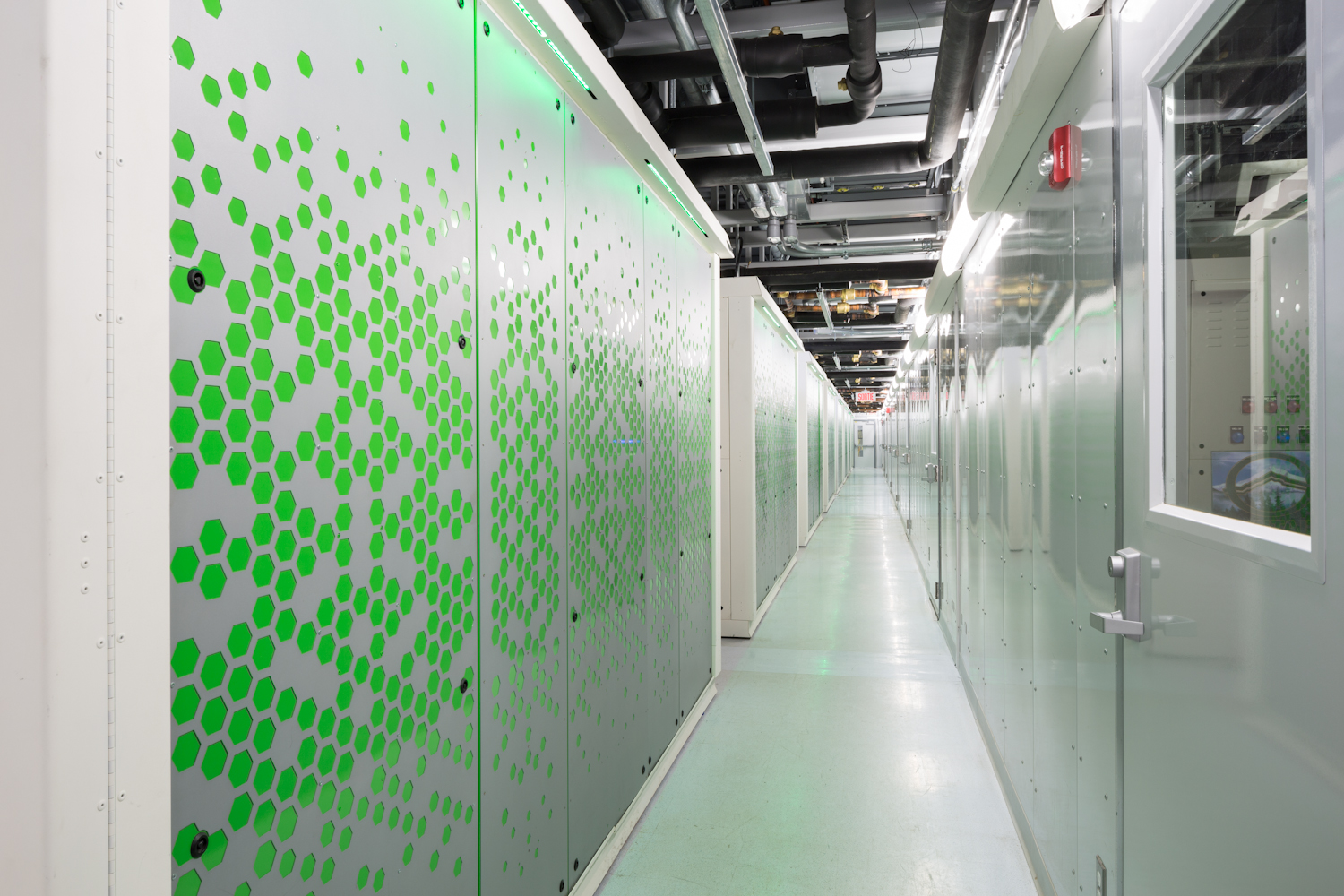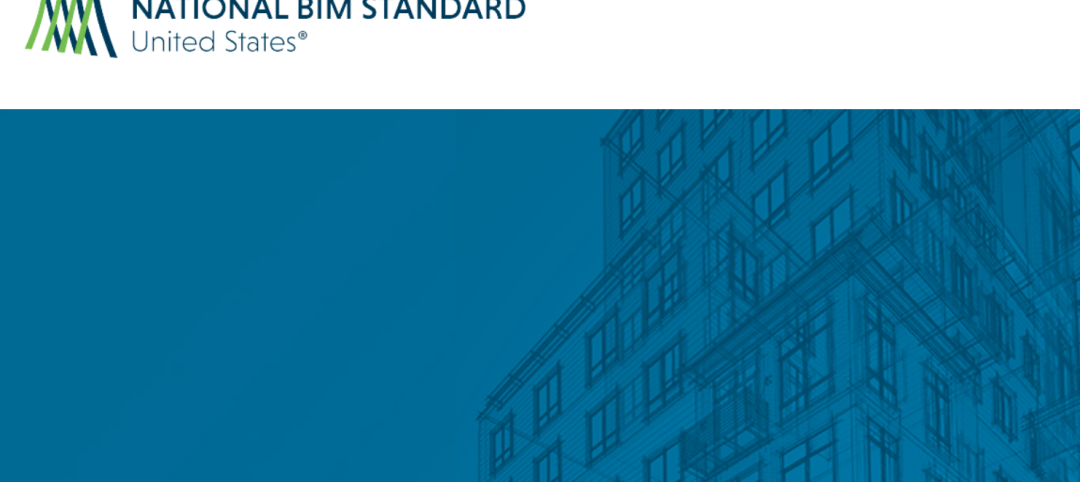If all goes as planned, Canada’s third-largest telecommunications company, Telus, next month will open what has been billed as one of the most energy-efficient data centers in the world. The $75 million, 215,000-sf facility, located in Kamloops, B.C., is projected to use up to 80% less power and 86% less water than a typical data center of its size. Its peak power utilization effectiveness (PUE)—the ratio of total energy used by the data center to the energy delivered to the computing equipment—is estimated at a minuscule 1.15.
The “secret sauce,” according to the facility’s contractor, Skanska, is a patented cooling technology, called eOPTI-TRAX, that replaces the traditional chiller plant. Together with its modular data center partner, Inertech, Skanska supplied the distributed, closed-loop system, which greatly expands the temperature range at which a facility can utilize outdoor air for “free” cooling. Telus’ Kamloops Internet Data Centre, for instance, will be able to use 100% outside air for cooling when temperatures are as high as 85°F—a huge improvement over the 45°F threshold typical with traditional chiller plant setups.
In lieu of underfloor air distribution, which requires numerous fans to push cold air toward the racks to cool the servers, the eOPTI-TRAX approach uses a contained hot- and cold-aisle design with optimized air circulation in the server aisles and liquid refrigerant coils lining the inside of the rear walls of the server rack to draw and absorb the heat. The scheme reduces hot-aisle temperatures from 160°F to just 75°F, according to Skanska.
The Telus project is among a handful of recently completed data centers that are raising the bar for energy and water efficiency. Building Teams are employing a range of creative solutions—from evaporative cooling to novel hot/cold-aisle configurations to heat recovery schemes—in an effort to slash energy and water demand. In addition, a growing number of data center developers are building facilities in cool, dry locations to take advantage of 100% outdoor air for cooling.
The National Center for Atmospheric Research’s new $70 million, 153,000-sf Wyoming Supercomputing Center in Cheyenne, for instance, uses the cool, dry air in combination with evaporative cooling towers to chill the supercomputers 96% of the year. Even when factoring the facility’s administrative offices, the building’s ultimate PUE is projected to be 1.10 or less, placing it in the top 1% of energy-efficient data centers worldwide. Where possible, the data center reuses waste heat for conditioning the office spaces and for melting snow and ice on the walkways and loading docks. Chilled beams provide efficient cooling in the administrative areas.
Facebook’s new model for data centers
While a temperate climate can be hugely advantageous for data center owners, it’s not a requirement for achieving a low PUE and WUE (water usage effectiveness), say data center design experts. Building Teams and technology providers continue to develop schemes that can operate efficiently at higher temperatures and relative humidity levels.
Take Facebook’s data center in Forest City, N.C., for example. Unlike the company’s other data center locations in Prineville, Ore., and Lulea, Sweden, the Forest City facility sits in a warm, humid climate—yet it has been able to achieve a PUE on par with the other installations, at 1.07, according to Daniel Lee, PE, Data Center Design Engineer at Facebook.
“Last summer, we had the second-hottest summer on record in Forest City and we didn’t have to use our DX system (direct expansion coils) system,” says Lee. “Although it was hot, with highs of 103°F, the relative humidity was low enough so that we could use the water (evaporative cooling) to cool the space.”
The trick, says Lee, is a simplified, holistic approach to data center design that optimizes not only the building mechanical systems, but also the computer hardware (servers and racks) and software applications—all with an eye toward reliability and energy efficiency. Traditional mechanical components—UFAD, chillers, cooling towers, etc.—are replaced with a highly efficient evaporative cooling scheme that uses 100% airside economization and hot-aisle containment. An open-rack server setup with exposed motherboards greatly reduces the energy required to cool the equipment. The result is a facility with fewer moving parts to break down that can operate efficiently at interior temperatures in excess of 85°F.
Facebook made waves in 2011 when it made public its design specs for its first in-house data center, in Prineville, under a program called the Open Compute Project. Modeled after open-source software communities, the program relies on crowd sourcing to share and improve on Facebook’s base data center scheme.
“We give the design away; you can take it and build it yourself,” says Chuck Goolsbee, Datacenter Site Manager at Facebook’s Prineville location. “All the components are there to build it in sort of a LEGO-like manner, from the building itself down to the servers.”
Facebook expects big things from the Open Compute Project. Many of the core component suppliers are involved—including Dell, Hewlett-Packard, Intel, and AMD—and thousands of data center experts have participated in engineering workshops and have given feedback to the group.
“Fifteen years from now, the DNA from Open Compute will be in every data center in the world,” says Goolsbee.
Related Stories
AEC Tech | May 9, 2023
4 insights on building product manufacturers getting ‘smart’
Overall, half of building product manufacturers plan to invest in one or more areas of technology in the next three years.
BIM and Information Technology | May 8, 2023
BIM Council seeks public comments on BIM Standard-US Version 4
The Building Information Management (BIM) Council is seeking public comment on an updated national BIM standard. NBIMS-US V4 has been three years in the making and is scheduled to be released this fall.
Digital Twin | May 8, 2023
What AEC professionals should know about digital twins
A growing number of AEC firms and building owners are finding value in implementing digital twins to unify design, construction, and operational data.
BIM and Information Technology | May 8, 2023
3 ways computational tools empower better decision-making
NBBJ explores three opportunities for the use of computational tools in urban planning projects.
Sustainability | May 1, 2023
Increased focus on sustainability is good for business and attracting employees
A recent study, 2023 State of Design & Make by software developer Autodesk, contains some interesting takeaways for the design and construction industry. Respondents to a survey of industry leaders from the architecture, engineering, construction, product design, manufacturing, and entertainment spheres strongly support the idea that improving their organization’s sustainability practices is good for business.
Sustainability | Apr 20, 2023
13 trends, technologies, and strategies to expect in 2023
Biophilic design, microgrids, and decarbonization—these are three of the trends, technologies, and strategies IMEG’s market and service leaders believe are poised to have a growing impact on the built environment.
Urban Planning | Apr 17, 2023
The future of the 20-minute city
Gensler's Stacey Olson breaks down the pros and cons of the "20-minute city," from equity concerns to data-driven design.
Intelligent Lighting | Feb 13, 2023
Exploring intelligent lighting usage in healthcare, commercial facilities
SSR's Todd Herrmann, PE, LEEP AP, explains intelligent lighting's potential use cases in healthcare facilities and more.
AEC Tech | Jan 27, 2023
Epic Games' latest foray into the AEC market and real estate industry
From architecture to real estate, the realm of computer-aided design hits new heights as more and more firms utilize the power of Epic Games’ Twinmotion and Unreal Engine.
AEC Tech | Jan 27, 2023
Key takeaways from Autodesk University 2022
Autodesk laid out its long-term vision to drive digital collaboration through cloud-based solutions and emphasized the importance of connecting people, processes and data.

















